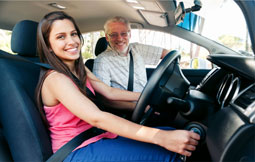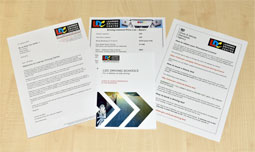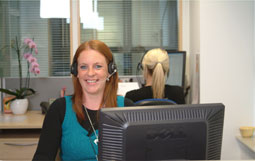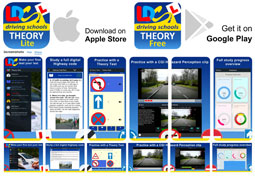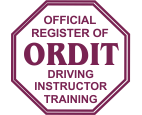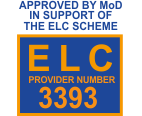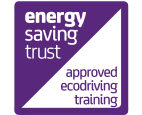Driving lesson 1. Getting moving
Introduction
Before you can begin to learn to drive you must make sure you have a valid provisional driving licence and are physically fit.
The main legal requirement in respect of this is your eyesight. You must be able to read a new style car number plate at a distance of 20.5 metres - about 5 car lengths - with glasses or contact lenses, if normally worn.
Key learning notes
The main controls
The first controls that you learn about are the "main" foot and hand controls.
Foot Controls
The accelerator pedal
 The accelerator, or gas pedal, is used with the right foot to control the speed of the car by increasing or decreasing the flow of fuel to the engine. This occurs when the car is in gear and the clutch plates are together. The pedal requires very little pressure to operate and should be used very lightly.
The accelerator, or gas pedal, is used with the right foot to control the speed of the car by increasing or decreasing the flow of fuel to the engine. This occurs when the car is in gear and the clutch plates are together. The pedal requires very little pressure to operate and should be used very lightly.
The foot brake
 The foot brake operates brakes on all four wheels and is used to slow the car down.
The foot brake operates brakes on all four wheels and is used to slow the car down.
It is operated by swivelling the right foot from the accelerator pedal to the foot brake while trying to keep your heel on the floor. The pedal should be pressed progressively firmer then as you reach the required speed smoothly released (i.e. squeeze and ease). When you press this pedal the brake lights at the back of the car come on to warn other drivers that you are slowing down or stopping.
 The clutch pedal
The clutch pedal
The clutch pedal is used with the left foot to break the link between the engine and the wheels by separating the clutch plates. You use it when changing gear and stopping. To operate the pedal press it firmly as far as it will go and then release it slowly and smoothly.
Hand Controls
The gear lever
 The gear lever is used with the clutch to select the gears.
The gear lever is used with the clutch to select the gears.
There are usually five forward gears and one reverse gear. Between the gears there is a central position called "neutral". When the lever is in this position, no gear is selected.
The handbrake
 The handbrake is used to hold the car still after it has stopped.
The handbrake is used to hold the car still after it has stopped.
Because the handbrake is only connected to two wheels it should not be used when the car is moving. To apply the handbrake press the button with your thumb and pull the lever upwards as far as it will go and then release the button. To release the handbrake press the button in and push the lever down.
 The steering wheel
The steering wheel
The steering wheel is used to turn the front wheels when changing direction. You should normally hold the wheel with your hands in the 'ten to two position' or the 'quarter to three position'. Most control is gained when the 'pull and push' method (covered later) is used to turn the wheel.
 The indicators
The indicators
The indicator stalk is usually located to either side of the steering wheel, it is designed for fingertip control. To signal simply move the stalk in the same direction as the steering wheel turns for the manoeuvre.
The Cockpit drill
The cockpit drill is a simple sequence of actions that must be carried out each time you sit behind the driving wheel. However, before you start this drill make sure the car is secure by checking the handbrake is on.
Doors
Make sure that all doors are firmly shut. Take special care if you are carrying children, use child locks if your car has them.

Seat
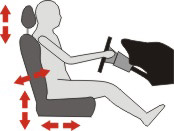 Adjust the base of your seat so that you can operate the foot pedals easily.
Adjust the base of your seat so that you can operate the foot pedals easily.
Firstly, ensure that you can depress the clutch pedal fully while not over stretching your left leg.
Secondly, if the base of the seat can be raised up and down adjust it until you can get a good view of the road ahead.
Thirdly, adjust the backrest of your seat so that you can reach all of the steering wheel with your arms slightly bent.
In some cars the steering wheel can be adjusted up, down, in or out. Use this adjustment in combination with the back rest. Fourthly, make sure that the head restraint is adjusted correctly to protect your neck and spine.
Mirrors
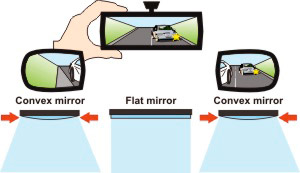 Adjust all of your mirrors so that you can obtain a clear view of the road behind and to each side of your vehicle. Use your left hand to adjust the interior mirror to frame the back window and be careful not to touch the surface of the mirrors with your fingers. If the vehicle is new to you check which mirrors are convex i.e. curved to give a wider field of vision. A convex mirror will make the image in the mirror appear smaller than it actually is and therefore further away.
Adjust all of your mirrors so that you can obtain a clear view of the road behind and to each side of your vehicle. Use your left hand to adjust the interior mirror to frame the back window and be careful not to touch the surface of the mirrors with your fingers. If the vehicle is new to you check which mirrors are convex i.e. curved to give a wider field of vision. A convex mirror will make the image in the mirror appear smaller than it actually is and therefore further away.
Seatbelts
Fasten your seatbelt being careful not to twist the straps and make sure that your passengers fasten theirs too. The driver is responsible for ensuring that all children under the age of 14 wear seat belts or use an approved child restraint. Full details about seatbelt laws can be found in the Highway Code.
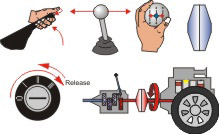 Switching the engine on and off
Switching the engine on and off
Before starting the engine you should check that the handbrake is on and that the gear lever is in neutral.
Turn the ignition key and immediately release it as the engine starts (to avoid damaging the starter motor).
Moving off and stopping
Moving off is easy so long as you follow the POM (Prepare, Observe, Move) routine. Once you have started the engine and prepared the car to move use the MSM (Mirrors, Signal, Manoeuvre) routine as you start to move.
Prepare
 Make sure the car is ready to move
Make sure the car is ready to move
- Press the clutch down as far as it will go.
- Select first gear.
- Rest your left hand on the handbrake.
- 'Set the gas'. Press the accelerator pedal slightly until the engine makes a lively humming sound and then hold it still. You are trying to generate sufficient power to move the car once the handbrake is released and the clutch pedal comes up.
- Slowly bring the clutch up until the sound of the engine drops slightly and then keep both feet still, this is called the 'biting point'.
 Observe (Mirrors and Signal)
Observe (Mirrors and Signal)
Make sure it is safe to move
- Take observations all around your vehicle and check your mirrors in the following sequence:
- Left (nearside) mirror
- Interior mirror
- Look ahead
- Right (offside) mirror
- Is it safe to proceed? Look over your right shoulder to check your right blind-spot. You are looking for potential dangers from other road users.
- Signal, if anyone will benefit and return your hand to the handbrake.
Move (Manoeuvre)
Move the car into the correct driving position
- When you are sure it is safe to move, release the handbrake.
- Bring the clutch up smoothly all the way as you gently press the accelerator to move the car forward.
- As the car starts to move check your interior mirror and right door mirror.
- Move your left foot away from the clutch pedal and rest it on the floor.
- Steer to your normal driving position, about a metre from the kerb.
- Cancel your signal, if you applied one.
- Press the gas pedal to pick up speed and look well ahead.
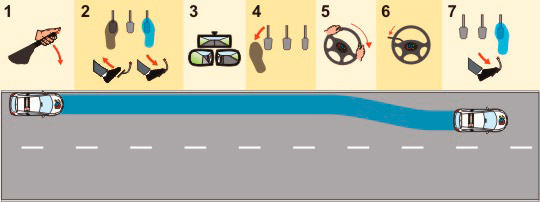
Stopping
- Apply the Mirrors, Signal, Manoeuvre routine for stopping. Check your interior mirror and left door mirror to ensure it is safe, signal if it will benefit anyone.
- Steer closer and parallel to the kerb.
- Press the brake pedal progressively firmer and just before the car stops begin to ease off and depress the clutch pedal fully.
- Finally, make the car safe:
Apply the handbrake
Select neutral
Remove your feet from the pedals
Cancel your signal if you applied one.
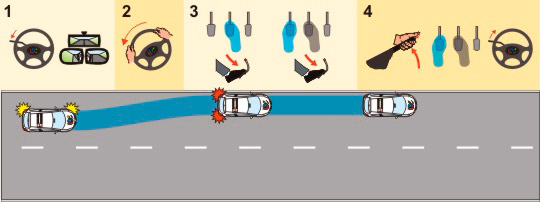
Highway Code Study
Rules: 92, 97, 99 - 104, 117, 159 - 161 and 243.

